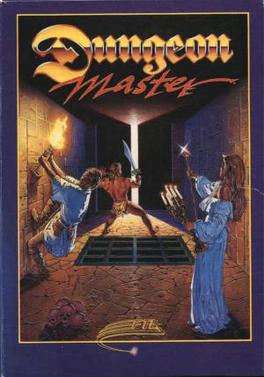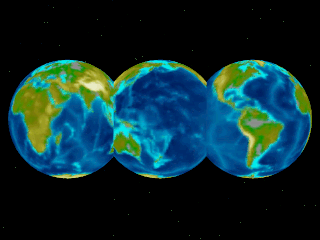| Developer(s) | Impulse |
|---|---|
| Initial release | 1986 |
| Stable release | 3.0 / January 1988 |
| Operating system | AmigaOS |
| Successor | Imagine |
| Type | 3D computer graphics |
TurboSilver was one of the original 3D raytracing software packages available for the Amiga and for personal computers in general. [1] [2] [3] [4]
It was first revealed by its creator Impulse at the October 1986 AmiEXPO. November 1987 saw the release of version 2.0. [5] Version 3.0 was released in January 1988. [6]
Impulse created a replacement for it, named Imagine in 1990. [7] [8] [9]

Amiga is a family of personal computers introduced by Commodore in 1985. The original model is one of a number of mid-1980s computers with 16- or 16/32-bit processors, 256 KB or more of RAM, mouse-based GUIs, and significantly improved graphics and audio compared to previous 8-bit systems. These systems include the Atari ST—released earlier the same year—as well as the Macintosh and Acorn Archimedes. Based on the Motorola 68000 microprocessor, the Amiga differs from its contemporaries through the inclusion of custom hardware to accelerate graphics and sound, including sprites and a blitter, and a pre-emptive multitasking operating system called AmigaOS.

The Atari ST is a line of personal computers from Atari Corporation and the successor to the Atari 8-bit family. The initial model, the Atari 520ST, had limited release in April–June 1985 and was widely available in July. It was the first personal computer with a bitmapped color GUI, using a version of Digital Research's GEM from February 1985. The Atari 1040ST, released in 1986 with 1 MB of RAM, was the first home computer with a cost-per-kilobyte of less than US$1.

Deluxe Paint, often referred to as DPaint, is a bitmap graphics editor created by Dan Silva for Electronic Arts and published for the then-new Amiga 1000 in November 1985. A series of updated versions followed, some of which were ported to other platforms. An MS-DOS release with support for the 256 color VGA standard became popular for creating pixel graphics in video games in the 1990s.

Out Run is an arcade driving video game released by Sega in September 1986. It is known for its pioneering hardware and graphics, nonlinear gameplay, a selectable soundtrack with music composed by Hiroshi Kawaguchi, and the hydraulic motion simulator deluxe arcade cabinet. The goal is to avoid traffic and reach one of five destinations.

Dungeon Master is a role-playing video game featuring a pseudo-3D first-person perspective. It was developed and published by FTL Games for the Atari ST in 1987, almost identical Amiga and PC (DOS) ports following in 1988 and 1992.

Paperboy is an arcade action game developed and published by Atari Games and Midway Games, and released in 1985. The player takes the role of a paperboy who delivers a fictional newspaper called The Daily Sun along a suburban street on his bicycle. The arcade version of the game featured bike handlebars as the controller.

Barbarian: The Ultimate Warrior is a 1987 video game developed and published by Palace Software for the Amstrad CPC, Commodore 64, and ZX Spectrum. The game was ported to many other systems and was licensed to Epyx who published it as Death Sword in the United States.
1989 saw many sequels and prequels in video games, such as Phantasy Star II, Super Mario Land, Super Monaco GP, along with new titles such as Big Run, Bonk's Adventure, Final Fight, Golden Axe, Strider, Hard Drivin' and Teenage Mutant Ninja Turtles. The year also saw the release of the Sega Genesis and TurboGrafx-16 in North America, and the Game Boy worldwide along with Tetris and Super Mario Land.

Sculpt 3D is a raytrace application released in 1987 for Amiga computers programmed by Eric Graham. Sculpt 3D was one of the first ray tracing applications released for the Amiga computers. It proved that raytracing could be done on home computers as well as on mainframes. Years later, the company Byte by Byte released a port for the Apple Macintosh.
Aladdin4D is a computer program for modeling and rendering three-dimensional graphics and animations, currently running on AmigaOS and macOS platforms. A-EON Technology Ltd owns the rights and develops current and future versions of Aladdin4D for AmigaOS, MorphOS & AROS. All other platforms including macOS, iPadOS, iOS, Linux & Windows are developed by DiscreetFX.

The Compaq Deskpro is a line of business-oriented personal computers manufactured by Compaq, then discontinued after the merger with Hewlett-Packard. Models were produced containing microprocessors from the 8086 up to the x86-based Intel Pentium 4.
Amiga software is computer software engineered to run on the Amiga personal computer. Amiga software covers many applications, including productivity, digital art, games, commercial, freeware and hobbyist products. The market was active in the late 1980s and early 1990s but then dwindled. Most Amiga products were originally created directly for the Amiga computer, and were not ported from other platforms.

AmigaOS 4 is a line of Amiga operating systems which runs on PowerPC microprocessors. It is mainly based on AmigaOS 3.1 source code developed by Commodore, and partially on version 3.9 developed by Haage & Partner. "The Final Update" was released on 24 December 2006 after five years of development by the Belgian company Hyperion Entertainment under license from Amiga, Inc. for AmigaOne registered users.

Imagine was the name of a cutting-edge 3D modeling and ray tracing program, originally for the Amiga computer and later also for MS-DOS and Microsoft Windows.

A-Train is a series of business simulation video games developed and published by Japanese game developer Artdink in Japan. The first game in the series was published in 1985. The first release in the United States was Take the A-Train II, published in 1988 by the Seika Corporation under the title Railroad Empire. However, the most well known U.S. release is Take the A-Train III, published in 1992 by Maxis as simply A-Train. There is also the spin-off title C.E.O..
3D computer graphics software refers to programs used to create 3D computer-generated imagery.

Falcon is a combat flight simulator video game and the first official entry in the Falcon series of the F-16 jet fighter's simulators by Spectrum HoloByte. Originally developed by Sphere for Macintosh and MS-DOS in 1987 and ported to several platforms between 1988 and 1992, the game earned commercial success and critical acclaim.
Retargetable graphics is a device driver API mainly used by third-party graphics hardware to interface with AmigaOS via a set of libraries. The software libraries may include software tools to adjust resolution, screen colors, pointers, and screenmodes. It will use available hardware and will not extend the capabilities in any way.

Jack Nicklaus' Greatest 18 Holes of Major Championship Golf is a golf-simulation video game developed by Sculptured Software, and published by Accolade beginning in 1988. It was released for Amiga, Amstrad CPC, Apple IIGS, Atari ST, Commodore 64 (C64), MS-DOS, Macintosh, MSX, Nintendo Entertainment System (NES), PC-88, and Sharp X68000.
Vous avez sans doute tous entendu parlé de ce merveilleux logiciel qu'est Imagine 2.0. Digne successeur de Turbo Silver.